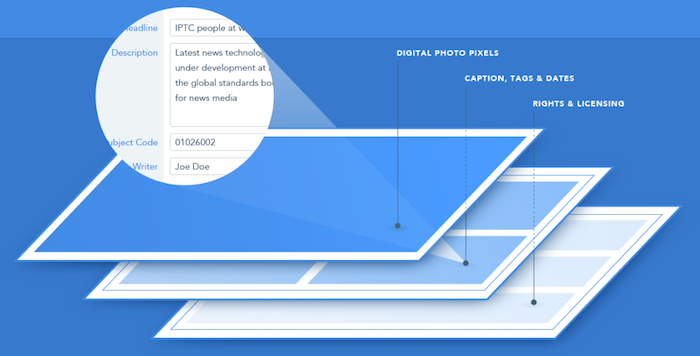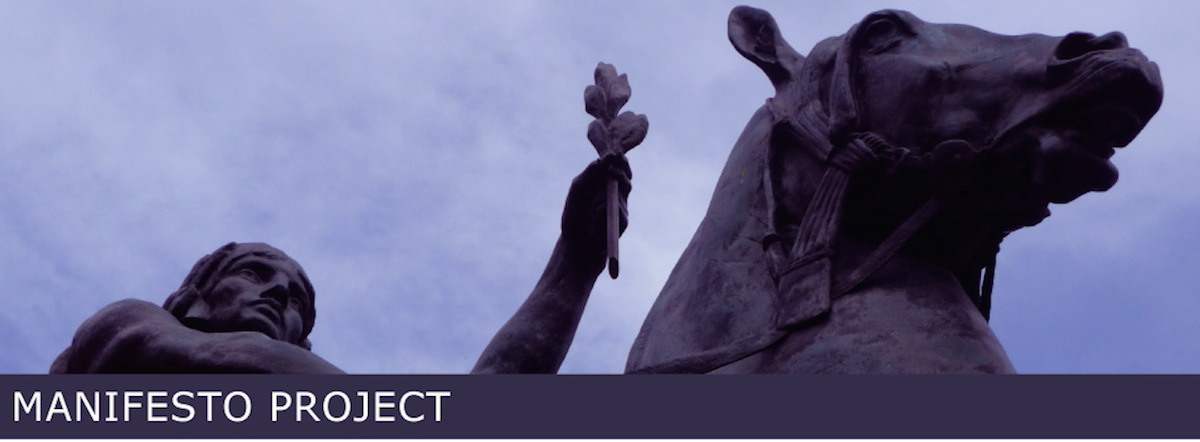Creator
International Press Telecommunications Council (IPTC) Photo Metadata sets the industry standard for administrative, descriptive, and copyright information about images.
Purpose
Critical to Photo and Related Businesses
Photo metadata is key to protecting images’ copyright and licensing information online. It is also essential for managing digital assets. Detailed and accurate descriptions about images ensure they can be easily and efficiently retrieved via search, by users or machine-readable code. This results in smoother workflow within organizations, more precise tracking of images, and increased licensing opportunities.

Manifesto
Photographers, film makers, videographers, illustrators, publishers, advertisers, designers, art directors, picture editors, librarians and curators all share the same problem: struggling to track rapidly expanding collections of digital media assets such as photos and video/film clips.
With that in mind we propose five guiding principles as our “Embedded Metadata Manifesto”:
- 1) Metadata is essential to describe, identify and track digital media and should be applied to all media items which are exchanged as files or by other means such as data streams.
- 2) Media file formats should provide the means to embed metadata in ways that can be read and handled by different software systems.
- 3) Metadata fields, their semantics (including labels on the user interface) and values, should not be changed across metadata formats.
- 4) Copyright management information metadata must never be removed from the files.
- 5) Other metadata should only be removed from files by agreement with their copyright holders.
More details about these principles:
1: All people
handling digital media need to recognise the crucial role of metadata for
business. This involves more than just sticking labels on a media item. The
knowledge which is required to describe the content comprehensively and
concisely and the clear assertion of the intellectual ownership increase the
value of the asset. Adding metadata to media items is an imperative for each
and every professional workflow.
2: Exchanging media items is still done to a large extent by transmitting files
containing the media content and in many cases this is the only (technical) way
of communicating between the supplier and the consumer. To support the exchange
of metadata with content it is a business requirement that file formats embed
metadata within the digital file. Other methods like sidecar files are
potentially exposed to metadata loss.
3: The type of content information carried in a metadata field, and the values
assigned, should not depend on the technology used to embed metadata into a
file. If multiple technologies are available for embedding the same field the
software vendors must guarantee that the values are synchronized across the
technologies without causing a loss of data or ambiguity.
4: Ownership metadata is the only way to save digital content from being
considered orphaned work. Removal of such metadata impacts on the ability to
assert ownership rights and is therefore forbidden by law in many countries.
5: Properly selected and applied metadata fields add value to media assets. For
most collections of digital media content descriptive metadata is essential for
retrieval and for understanding. Removing this valuable information devalues
the asset.
Source
http://www.embeddedmetadata.org/embedded-metatdata-manifesto.php
Comment
I think there are three things to note here.
Firstly, for many of us, this will occur as an obscure manifesto compared to something as far-reaching and universal as Martin Luther King’s I Have a Dream speech.
While many of us are not that interested in ‘embedded metadata’ it’s a crucial idea for the people it impacts and you can have a manifesto about anything – big or small, personal or universal.
Secondly, the manifesto is offered as ‘guiding principles’. While The Bible offers ‘commandments’ and Four Pillars Gin offers ‘pillars’. This sets the tone for the manifesto.
Of particular note is these ‘guiding principles’ are offered as an industry standard. Clearly this is voluntary, but it is also a call to arms to say ‘this is what we think is the way to do this.’ And indirectly, they’re saying, ‘join us if you agree’.
If you want agreement around a standard in your industry, publishing a manifesto is one way to launch the process, invite discussion and ultimately form agreement.
Thirdly, I like the three layers offered. There is an introduction stating who may be interested in this manifesto followed by five short sentences for the five principles. Then there is a paragraph on each that goes into more detail. (Each paragraph could easily become a page and a page could become an article or chapter.)
Depending upon the purpose of your manifesto, consider the various layers it might have from a brief summary to a longer form, or perhaps words to a visual.


